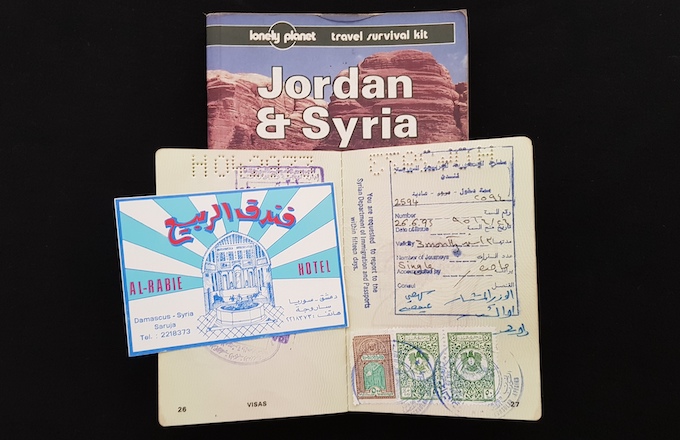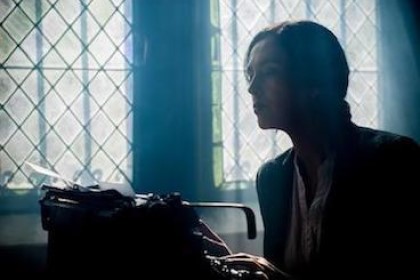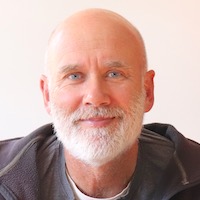12+ My wife and I spent ten days backpacking through Syria in 1995. Former U.S. Secretary of State Alexander Haig once described Syria as the world's worst state sponsor of terrorism. We had our difficulties along the way. But in Damascus, I met a tailor who asked me to tell the world, Syrians love peace.
My travel journal records we entered Syria from Turkey at the northern Killis-A'zaz highway border crossing on 31 August 1995.
There was the usual haggle with Turkish taxi drivers over the short drive from Killis to the border. However, passport formalities proved straightforward on both sides. I thought an "impromptu strum on my guitar" for the border guards might have smoothed the process. (More likely they wanted to see the back of me and my guitar!)
And before long we were haggling with Syrian taxi drivers for the similarly short drive to A'zaz, from where we caught a minibus for our first destination, Aleppo.
One Noisy Night in Aleppo
Much has been said and written about Aleppo since the outbreak of the Syrian civil war.
Once, the largest city in Syria, renowned for its UNESCO world heritage sites and old yellow taxis, nine years of street battles and bombing have devastated Aleppo's population and buildings.
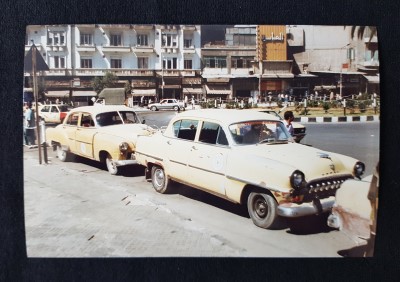
I wish I had fond memories and journal entries of Aleppo for all its suffering, but I don't. Despite wearing a modest long skirt, t-shirt and cap, men "leered" at my wife and pinched her backside. People "growled" at us in the streets and tourist touts and food vendors hassled and overcharged us.
And, unknown to us when we checked in, our hotel was adjacent to a nightclub, which played VERY loud, live music until 3 am. After which, we only had to put up with a "neighbour's noisy TV".
The next morning, after waking to the 5 am prayer call, we decided to cut short our bleary-eyed stay in Aleppo.
The Wooden Norias of Hama
We based ourselves further south in Hama for the next two days, famous for its wooden norias, or water wheels.
There are conflicting reports as to whether the norias have survived the civil war. However, the Siege of Hama in 2011 caused widespread destruction of buildings and hundreds of deaths.
Hama in 1995 was more relaxed than Aleppo — and, thankfully, less noisy at night! Families and couples strolled the streets and gardens near the norias. Most women and girls wore headscarves, a few had full veils, but some dressed more like "Europeans, albeit conservative".
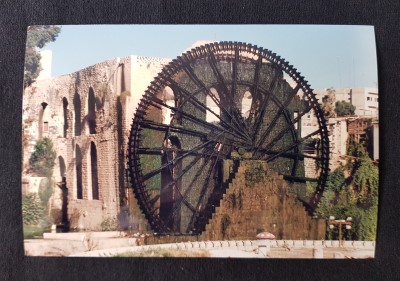
My journal records how I thought we "blended in" with our long pants and t-shirts. However, as I also noted, the "stares" we got suggested otherwise.
Crusader Ghosts
We had a good night's sleep and the next morning caught a bus from Hama to Homs for the spur-minibus to the Crusader castle, Crac des Chevaliers.
Like Aleppo, civil war has devasted Homs, formerly the third-largest city in Syria. I don't recall the cityscape from our brief visit. But I jotted in my journal how I was "glad" we'd chosen Hama over Homs as our base.
For me, Crac des Chevaliers was one of the highlights of our travels in Syria. I had a "boy's own adventure" in the castle, exploring passageways, climbing walls and towers, and imagining armoured knights surveying the surrounding plains. As I wrote in my journal:
With sunlight filtering through the dusty grills and wind gusting through the open doorways and windows, the castle had an eery, almost ghostly feel.
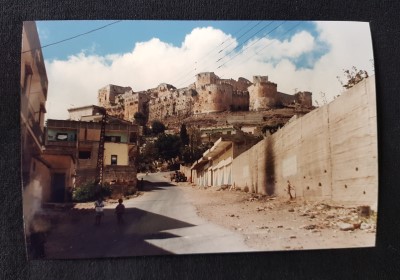
To my shame, my tourist sensibilities back then didn't dwell on the brutality the ghosts of the twelfth and thirteenth century Crusader knights wrought on the Muslim population.
A Madman in the Desert
We had a last relaxing night in Hama, strolling in the gardens past the norias, before returning to Homs for the minibus to Palmyra.
I documented in my travel journal many examples of maniac drivers and near misses in Syria. However, my entry for that day described our driver through the desert to Palmyra as a "madman":
He drove with his hand on the horn, cursing anyone who dared get in his way and carrying on arguments with other drivers as he sped past them. He even took on a couple of army tanks rolling out of the desert!
After two hair-raising hours on the minibus, Palmyra appeared as an oasis of green shimmering on the bleached desert landscape. We passed lush fields of date palms, and then the road into town veered straight past Palmyra's world heritage listed columns and ruins.
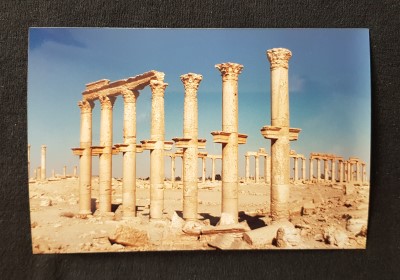
The Ruins of Palmyra
Through the minibus windows, Palmyra looked like it would live up to the enthusiastic description in our Lonely Planet guidebook to Jordan and Syria (2nd Edition, 1993):
If you're only going to see one thing in Syria, make it Palmyra. Even if you have seen enough ruins to last you a lifetime and the thought of one more is enough to make you groan, make the effort to see this one as it really is something special.
Sidenote: Sadly, after the long and bloody civil war, today's Lonely Planet guidebook for the region only covers Jordan (Amazon affiliate link).
The ubiquitous hassle and haggle to find a hotel when we got off the bus in Palmyra soon left me "frazzled". I wanted to dump my backpack and explore the ruins. In the end, I set off on my own, leaving my wife to shelter from the mid-afternoon heat in our hotel room.
It was sweltering and sweaty in the sun, but I still enjoyed the twenty-minute walk to the ruins. The scale was far more extensive and better preserved than I had expected. Even the "piles of rubble" helped give me an impression of the scale of ancient Palmyra.
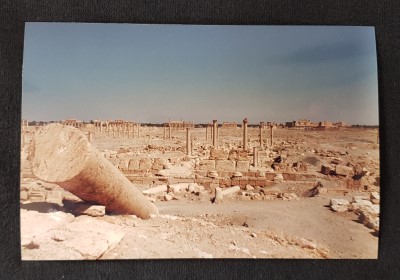
And, probably due to the heat, I had the site to myself — except for a young boy on a bicycle who invited me back to his family's farm for tea, or shay. Of course, it wouldn't be free. We haggled and settled on ten Syrian pounds for two cups of shay, or less than twenty British pence.
Sweet Afternoon Tea
The naive risks I took as a younger backpacker send shivers up my middle-aged spine today. But thankfully, those weren't the days of ISIL and kidnappings.
There were two buildings at the farm: I sat on a carpet in one with the boy's father and brothers, and the women of the family toiled away in the other. A teenage girl crossed the divide to bring us shay glasses and a pot of freshly boiled tea.
I noted in my diary that an "air of lethargy" hung over the men. And I wondered if the green coloured tea they kept topping up might be "narcotic". Or perhaps it was the "sugar crash" side effect from the all sugar they shovelled into their sweet shays?
As expected, there were various attempts to sell me a rug, a Bedouin headscarf, and postcards. The father even asked to swap my watch for his. Throughout, I didn't feel threatened. I shook my head, smiled and replied, "La shukran" (No thanks). And they would top my tea (No sugar, shukran!) and offer me something else.
After a series of fruitless sales pitches, the family lost interest in me. I paid for my tea and left the father and brothers to their relaxed stupor. The entrepreneurial young boy had disappeared earlier, probably to find a wealthier tourist.
Palmyra: Something Special
My wife and I spent three days in Palmyra. We explored its ruins and the 17th-century Arab castle overlooking the town and ruins.
And we enjoyed shady midday lunch breaks in the oasis's "gardens" of date palms and olive groves. Our Lonely Planet guidebook was right: Palmyra was "something special".
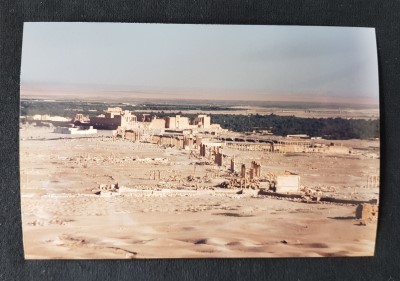
When we boarded the bus to Damascus, I was glad our seats were up front behind the driver so we could savour our last views of the columns through the windscreen.
Twenty-five years on, it's sad to reflect on the death and destruction in Palmyra caused by ISIL.
Road to Damascus
After the desert town of Palmyra, the high-rise buildings and traffic congestion of the Syrian capital city proved a shock.
A hotel worker in Palmyra had recommended accommodation in Damascus. He'd written the name and address in Arabic in my journal, and I'd added a phonetic translation, "AL-RAB-EE, SAR-ROO-JAR". But it was harder to find the hotel than we'd hoped.
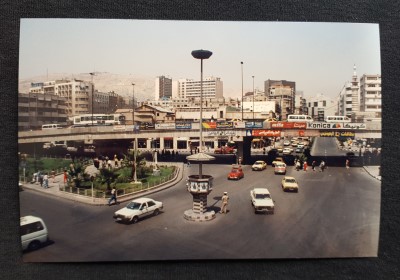
Two boys appointed themselves our guides. And after consulting with passers-by, assured us the street we wanted was "just around the corner". When we turned the corner, we were shocked to see a "demolition site". However, sidestepping the rubble, we entered a narrow alley, Saruja Street.
Suddenly, the sounds of people talking and caged bird song replaced the din of modern Damascus. It was like stepping through a portal into the past.
And the recommended Al-Rabie Hotel proved an "oasis within an oasis". Beyond its reception area, was a high-ceilinged inner courtyard, with a fountain and vines hanging from upper floor railings. It was the perfect place to relax and catch-up our travel journals after a refreshing shower. And to enjoy a takeaway dinner of falafels from the shop next door (staffed by two young boys) and dessert icecreams from another shop.
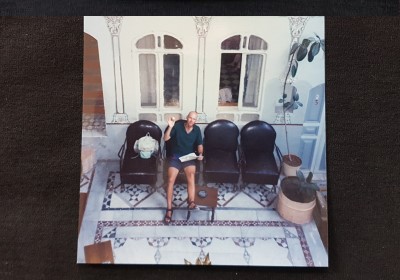
Later I popped back out to fetch cold soft drinks and further familiarise myself with our olde worlde surroundings. I spotted a luthier a few doors near the hotel and noted I'd have to visit him tomorrow, "without my wallet".
A Tourist Trap
In the morning, we organised our onward journey to Jordan and Amman, negotiating the city streets to the bus station like "locals" (unlike yesterday).
Afterwards, we headed to the main souk, Souq al-Hamadiyyeh, to change money for our last days in Syria and browse the shops and stalls. Our Lonely Planet guidebook warned of a mixed reception:
Souq al-Hamadiyyeh is worlds away from the traffic jams and chaos of the streets outside. It's also the closest thing to a tourist trap in Syria. The golden rule is to bargain and bargain hard.
On cue, a tourist tout approached waving silks as soon as we entered the souk — he also offered to change money at an attractive black market rate at his shop.
We followed him down a narrow alley and up a narrower set of stairs into a small shop crammed with souvenirs and carpets. It seems naive nowadays, but again, those weren't the days of kidnappings.
Of course, before we got down to the business of changing money, out came cups of sugary shay and a sales pitch. Thankfully, "La shukran" with a smile worked as it had with the Palmyran family. We finished sipping tea and slipped the Syrian pounds into our money belts.
The Family Mosque
Across from Souq al-Hamadiyyeh markets, we found the Omayyad Mosque, which Lonely Planet described as "a peaceful place and a respite from the heat and the hustle and bustle outside".
The atmosphere inside the mosque was a pleasant surprise. It felt like we'd stumbled across family picnics in a park. Families and couples sprawled on the carpets and rugs scattered over the floors, and kids ran about the mosque. I noticed a few men had dozed off in the morning heat. And then an official walked through and "roused" them into a more reverential position with his cane.
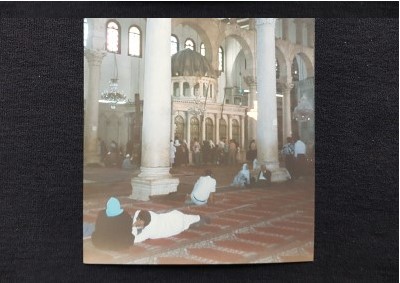
The hubbub of conversation and laughter in the mosque hushed during the midday prayer call, as lines formed facing the wall closest to Mecca. Men and women completed the prayer ritual together, with young children mimicking their parents' movements.
As I recorded in my journal, it was a privilege to witness a "living religion" in the Omayyad Mosque, without the "division of sexes or exclusion of tourist interlopers".
A Tailor in Damascus
We returned to the Al-Rabie Hotel after a long, footslogging day of sightseeing around the walls and sights of Old Damascus.
I stopped to talk with the neighbouring luthier, a lute maker. He knew little English, and so he asked the tailor in the shop across from him to help translate. I felt guilty because I had just wanted to tell him I'd once made an electric guitar. And he clearly hoped to sell me a lute.
Having disappointed the luthier, I ended up sitting and having a good chat with the tailor, Hanni. We talked about his work, making military outfits (five a day!) and leather jackets. He told me his father and brothers are also tailors. And he commented on the "injustice" of being unable to get visas for England or America.
I enjoyed chatting with Hanni. After a week of travelling in Syria, he gave me my first insight into Syrians. And he had a refreshing live for today approach, "for tomorrow I may be run over by a bus". I bought Hanni a cold Coke and promised I'd visit again tomorrow.
LOVE WRITING NONFICTION?
Share and showcase your nonfiction and other writing — fiction and reviews — as a Guest Writer on Tall And True.
A Furtive Transaction
The next morning we stocked up on camera film as Lonely Planet claimed it was cheaper in Damascus than Amman and beyond. The unbudgeted purchase depleted our Syrian pounds, so we returned to Souq al-Hamadiyyeh to change more money.
A different tourist tout pounced when we entered the souk. I said, "La shukran" to his offer of silks, and we headed up the narrow stairs to yesterday's shop. The tout followed us, explaining he also worked at the shop. We accepted the shop manager's offer of a cup of shay but declined more "free viewings" of carpets and waited to change money.
A "burly Scandanavian" entered and started discussing "silver objects" with the manager. In between business, he disclosed he was part of the U.N. military force monitoring the Golan Heights.
It seemed the burly bloke was also into black marketeering because he pocketed our U.S. dollars when we handed them over for Syrian pounds. Unlike yesterday, the transaction felt furtive, and we didn't hang about for a second cup of shay.
The Tailor's Message
We filled the rest of our morning with a visit to the artisans' souk, where we watched men hammering and welding sheets of metal and a blacksmith's forge. And then we spent an enjoyable couple of hours at the National Museum, checking out the Palmyra exhibits. However, I was keen for another chat with Hanni, the tailor and headed to his shop with a couple of cold Cokes as soon as we got back to the Al-Rabi Hotel.
Although competent in English, Hanni occasionally came unstuck with the meaning of a word. So he asked a friend from the electrical shop across the street to help out. The electrician's English may have been good, but his rapid-fire questions and answers while translating were incomprehensible. Hanni soon realised this and dismissed him, saying he "was not an English translator but a donkey."
Many people popped in and out of the tailor shop during our hour a bit together. Glasses of shay arrived, the phone rang for a neighbour, and a couple of soldiers priced uniforms and jackets. And another Aussie couple turned up with the luthier who needed Hanni's help to sell them a lute.
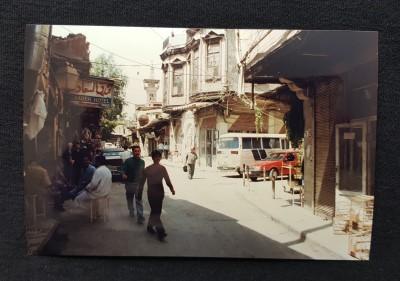
All the time, Hanni and I chatted while he stitched military pants on his sewing machine. We talked about the difference in earnings in Syria and England. And the cost of marriage and number of children he planned to have — he was shocked when I revealed my wife and I weren't planning any!
But what was most memorable, were his views on the Gulf War (1990-91). He couldn't believe Arabs had killed Arabs. "And for what?" he asked. With Saddam Hussien still in power (in 1995), I could only agree with him.
Finally, Hanni decided it was time to shut up shop. It was Friday tomorrow, the Muslim day of worship, and his one-day weekend — he was amazed we have two day weekends in Australia.
It felt sad saying goodbye to Hanni. My wife and I would be on the bus to Amman early on Sunday morning, so I knew I wouldn't see him again. And I had enjoyed our conversations, learning more about Syrians than I'd ever get from a guidebook or museum.
As I left the tailor shop, Hanni asked me to pass on a message to the world:
"Tell them Syrians love peace. Tell them, please."
Long Day Trip to Bosra
We had an early start for our day trip to Bosra (Busra), a three-hour multi-minibus journey south of Damascus. Being a Friday, the streets were empty. And for a change, crossing main roads on our way to the bus station was not a life-threatening exercise.
The first leg of our trip to Dera (Daraa) took two hours. It felt longer. Though, as I admitted in my diary, it must have been worse the "poor sheep bleating" in the luggage compartment under my seat. In Dera, we swapped minibuses for the shorter hour-leg to Bosra. A group of young guys sitting behind us had fun, one of them tipping off my cap with his big toe. The fun stopped when I turned around and grabbed his big toe with a "forced smile and laugh".
Similar to Palmyra, our Lonely Planet guidebook offered an enthusiastic description of Bosra:
It's a weird and wonderful place. Apart from having possibly the best preserved Roman theatre in existence, the rest of the town is built in, around and over old sections of Roman buildings, almost entirely out of black basalt blocks.
And so it was! Among grizzles about the long drive there (and back!), my journal records how the "tunnels in the (black basalt) Citadel reminded us of Crac des Chevaliers". However, unfortunately, the tunnels "stank of shit", and we didn't explore them extensively.
Climbing a "steep, dark, stone staircase" in the Citadel, we "emerged into the upper tiers of a Roman theatre", wholly enclosed by the fortress walls. After the tunnels, I noted the theatre was "a breath of fresh air (in more ways than one!)".
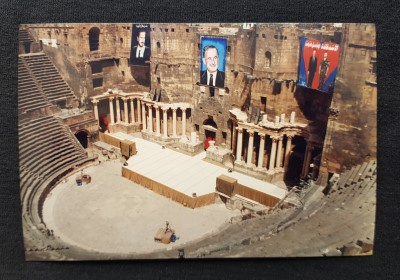
Across the back of the theatre's stage were draped ubiquitous posters of the Syrian leader, Hafez al-Assad, and his son and heir apparent, Bassel. Later I learned from another tourist Bassel had died in a car accident in 1994. I observed in my journal, "It seems odd Syrians should idolise Assad's chosen successor when the successor is dead." But as the civil war under Bashar al-Assad proved, Syrians had little choice.
My wife and I were both shattered by the time we got back to Damascus. After much-needed showers, I fetched falafels and cold Fantas from the local shop for our dinner. It was a nice touch that the old guy behind the counter trusted me to return the bottles without paying a deposit. And to be greeted by the neighbouring barber (from whom I'd had an earlier trim) like an old friend.
The Al-Rabie Hotel and Saruja Street and its shops and people have been kind to us. As I wrote in my journal that night:
"It's unlikely we'll find something close to it again in our travels."
So Long, Syria
We woke before dawn on 9 September 1995, showered, and packed and shouldered our backpacks. The sky was turning faint crimson when I roused the Al-Rabie receptionist to unlock the hotel doors and let us out onto the still deserted streets.
At the bus station, we met a Kiwi couple, B. and S., who were also heading to Amman. (We ended up travelling with B. and S. through Jordan and parts of Egypt, as I wrote in Three Visits to Dahab - 1995.) There were the usual hassles at the border, including variable visa costs for Jordan. Our new Kiwi friends paid JD$4 each (JD$1 = BP£1). A Swedish backpacker copped JD$16 for his visa. And for us Aussies, the cost was zero. ("You beauty!")
We boarded the bus again and crossed the border. The beaming King Hussein of Jordan replaced the Assad and son posters on billboards and buildings. We had left Syria. A country I'd never dreamed I'd visit, and to which I now know I'll never return.
LOVE WRITING?
Share and showcase your writing — fiction, nonfiction and reviews — as a Guest Writer on Tall And True.
However, a quarter of a century on, I have not forgotten my ten days in Syria. The norias of Hama and ghosts of Crac des Chevaliers. And the ruins of Palmyra and family atmosphere of the Omayyad Mosque. And especially the Al-Rabie Hotel and Saruja Street in Damascus. But most of all, my conversations in the tailor shop with Hanni.
When I see news of the Syrian civil war and refugees, I think of Syria and its people. And I'm haunted by the message Hanni asked me to tell the world: Syrians love peace!
© 2021 Robert Fairhead
N.B. You might also like this travel piece shared on Tall And True, Three Visits to Dahab (July 2018), featuring the Kiwi couple we met in Damascus, B. and S.
An interview with former Middle East correspondent, Sophie McNeill, about her book on Syria, We Can't Say We Didn't Know: Dispatches from an Age of Impunity (Amazon affiliate link), inspired me to write and share this travel piece.
I wrote a Tall And True blog post about the interview and her book in March 2020, Syria: We Can't Say We Didn't Know.
And in November 2020, I wrote a short story for the Furious Fiction competition loosely based on someone I met at the Al-Rabie Hotel and the photo of me sitting in the courtyard.
Robert is a writer and editor at Tall And True and blogs on his eponymous website, RobertFairhead.com. He also writes and narrates episodes for the Tall And True Short Reads storytelling podcast, featuring his short stories, blog posts and other writing from Tall And True.
Robert's book reviews and other writing have appeared in print and online media. In 2020, he published his début collection of short stories, Both Sides of the Story. In 2021, Robert published his first twelve short stories for the Furious Fiction writing competition, Twelve Furious Months, and in 2022, his second collection of Furious Fictions, Twelve More Furious Months. And in 2023, he published an anthology of his microfiction, Tall And True Microfiction.
Besides writing, Robert's favourite pastimes include reading, watching Aussie Rules football with his son and walking his dog.
He has also enjoyed a one-night stand as a stand-up comic.

